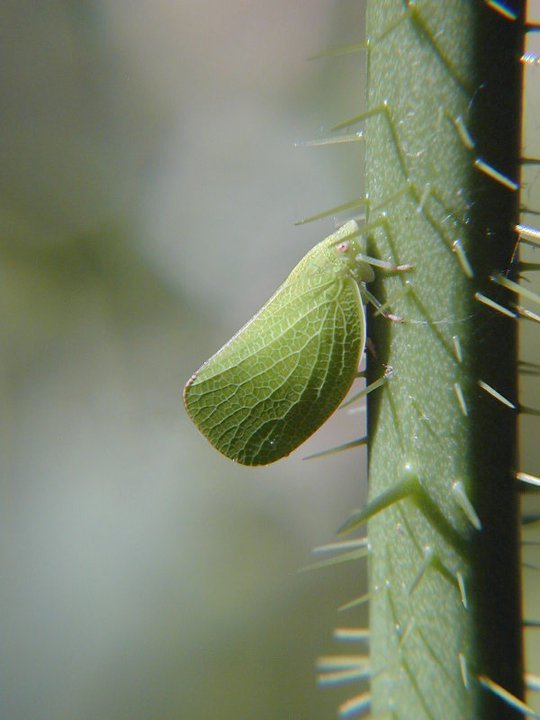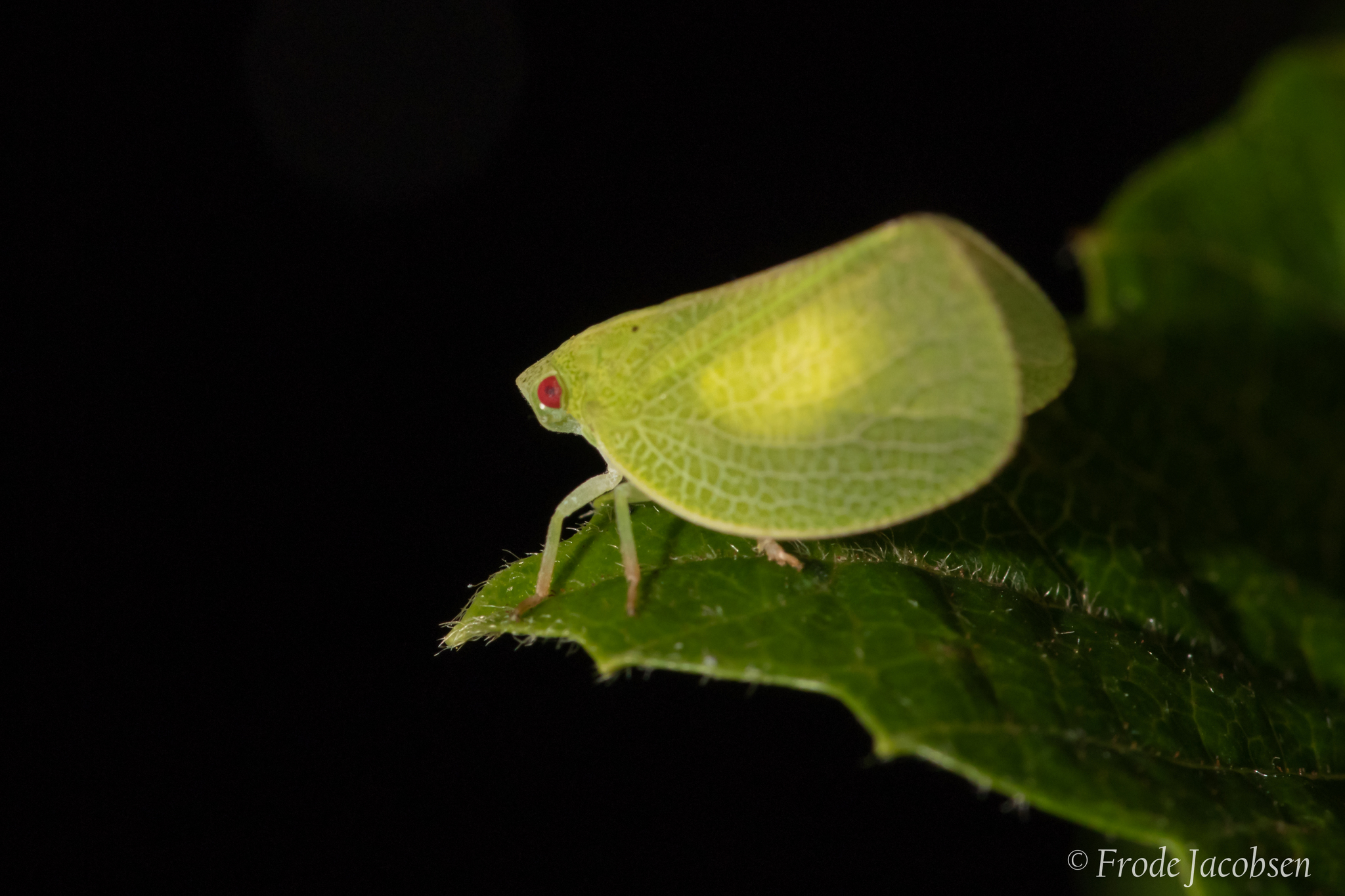Map Snapshot























205 Records
Description
Distinguished from similar members of this genus such as A. serveilli by the venation pattern, pointed "nose", and the two black spots on the thorax. Total length of approximately 10 mm and height of 6 mm.
Seasonality Snapshot
Source: Wikipedia
| Acanalonia conica | |
|---|---|

| |
| Acanalonia conica | |
| Scientific classification | |
| Domain: | Eukaryota |
| Kingdom: | Animalia |
| Phylum: | Arthropoda |
| Class: | Insecta |
| Order: | Hemiptera |
| Suborder: | Auchenorrhyncha |
| Infraorder: | Fulgoromorpha |
| Family: | Acanaloniidae |
| Genus: | Acanalonia |
| Species: | A. conica
|
| Binomial name | |
| Acanalonia conica (Say, 1830)
| |
Acanalonia conica is a species of planthopper in the family Acanaloniidae. It is found in North America and Europe.[1][2][3] More accurately, it is native to North America, and was first found in Europe in Italy in 2003, most likely through human activity.[4] It has since spread throughout Europe.[5][6]
Distribution
[edit]The species is native to the Nearctic realm, but has been found in Northern Italy for the first time in 2003.[4] It was then found in Slovenia,[7] Switzerland,[8] France,[6] Hungary,[9] Austria,[5] and Romania.[citation needed]
Biology
[edit]A. conica is known to be a very polyphagous species, capable of developing on diverse host plants, including cultivated species.[citation needed] Since its introduction in Italy, the species has been observed to form population much denser than the ones in its native range.[4] It was estimated that due to its similarities to another introduced planthopper, Metcalfa pruinosa, it is at risk of spreading further and becoming a pest.[citation needed]
In its native range, A. conica is very often living in association with three flatid planthopper species.[10]
Life cycle
[edit]The species has only one generation per year (univoltine). Eggs are laid in the summer and in the Autumn, individually encased in concavities cut inside woody tissue of the plant host. Nymphs are brown in color and have a typical hump-backed, or generally more spherical shape. They are covered with long white waxy filaments. The adults are bright green, with a conic head, and bright red eyes. Their fore-wings display a visible network of veins.[10] Both nymphs and adults produce abundant honeydew[4].

References
[edit]- ^ "Acanalonia conica". GBIF. Retrieved 2019-12-25.
- ^ "Acanalonia conica species Information". BugGuide.net. Retrieved 2019-12-25.
- ^ Bartlett, C.R. (2012). "Planthoppers of North America". Retrieved 2019-07-02.
- ^ a b c d D'Urso, Vera; Uliana, Marco (2006). "Acanalonia conica (Hemiptera, Fulgoromorpha, Acanaloniidae), a Nearctic species recently introduced in Europe". Mitteilungen aus dem Museum für Naturkunde in Berlin – Deutsche Entomologische Zeitschrift. 53 (1): 103–107. doi:10.1002/mmnd.200600010. ISSN 1435-1951.
- ^ a b Holzinger, Werner E. (2020). "Acanalonia conica (Say, 1830) and three other true hopper species new for Austria (Hemiptera: Auchenorrhyncha)" (PDF). Cicadina. 19: 9–19 – via hemiptera-databases.org.
- ^ a b Clément, Vincent (2024-03-22). "First record of the alien green cone-headed planthopper Acanalonia conica (Say, 1830) (Hemiptera, Fulgoromorpha, Acanaloniidae) in Alsace (France, Grand Est, Haut-Rhin)". Bulletin de la Société d'Histoirenaturelle et d'Ethnographie de C. 80 (5): 21–23. Retrieved 2024-08-06.
- ^ Seljak, Gabrijel (2018). "NOTABLE NEW FINDINGS OF AUCHENORRHYNCHA (HEMIPTERA) IN SLOVENIA". Acta Entomologica Slovenica. 6 (2): 181–194 – via researchgate.net.
- ^ Trivellone, Valeria; Knop, Eva; Turrini, Tabea; Andrey, Aline; Humbert, Jean-Yves; Kunz, Gernot (2015-12-31). "New And Remarkable Leafhoppers And Planthoppers (Hemiptera: Auchenorrhyncha) From Switzerland". Mitteilungen der Schweizerischen Entomologischen Gesellschaft. 88 (3–4): 273–284. doi:10.5281/ZENODO.33990.
- ^ Kóbor, Péter; Kondorosy, Előd; Nagy, Csaba; Orosz, András (2021-11-12). "Acanalonia conica (Say, 1830): A new alien planthopper species established in Hungary (Auchenorrhyncha: Fulgoroidea: Acanaloniidae)". Acta Phytopathologica et Entomologica Hungarica. 56 (2): 201–207. doi:10.1556/038.2021.00132. ISSN 1588-2691.
- ^ a b Wilson, Stephen W.; Lucchi, Andrea (2000). "Distribution and ecology of Metcalfa pruinosa and associated planthopper in North America (Homoptera: Fulgoroidea)". Rendiconti. XLIX: 121–130.
External links
[edit] Media related to Acanalonia conica at Wikimedia Commons
Media related to Acanalonia conica at Wikimedia Commons



























